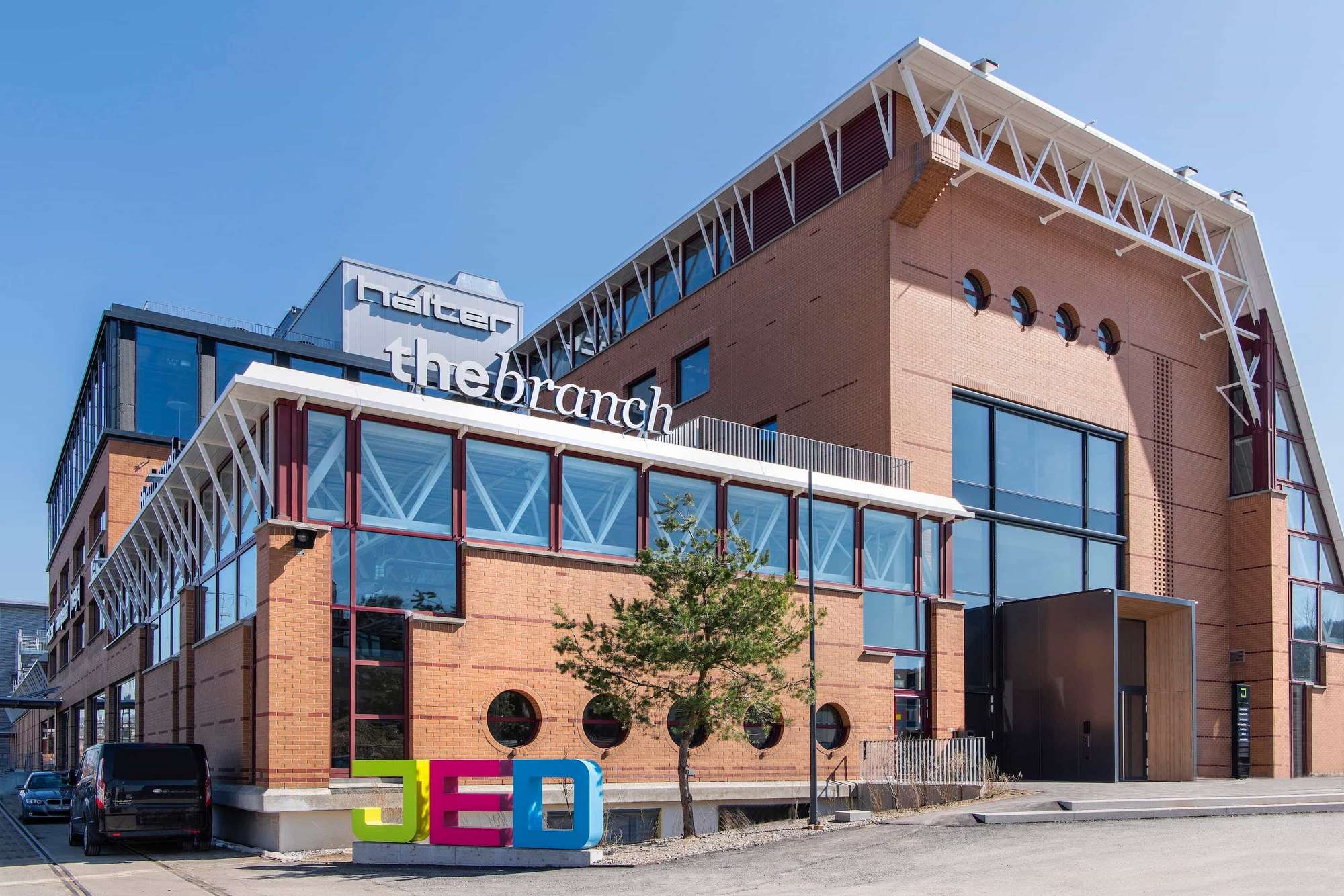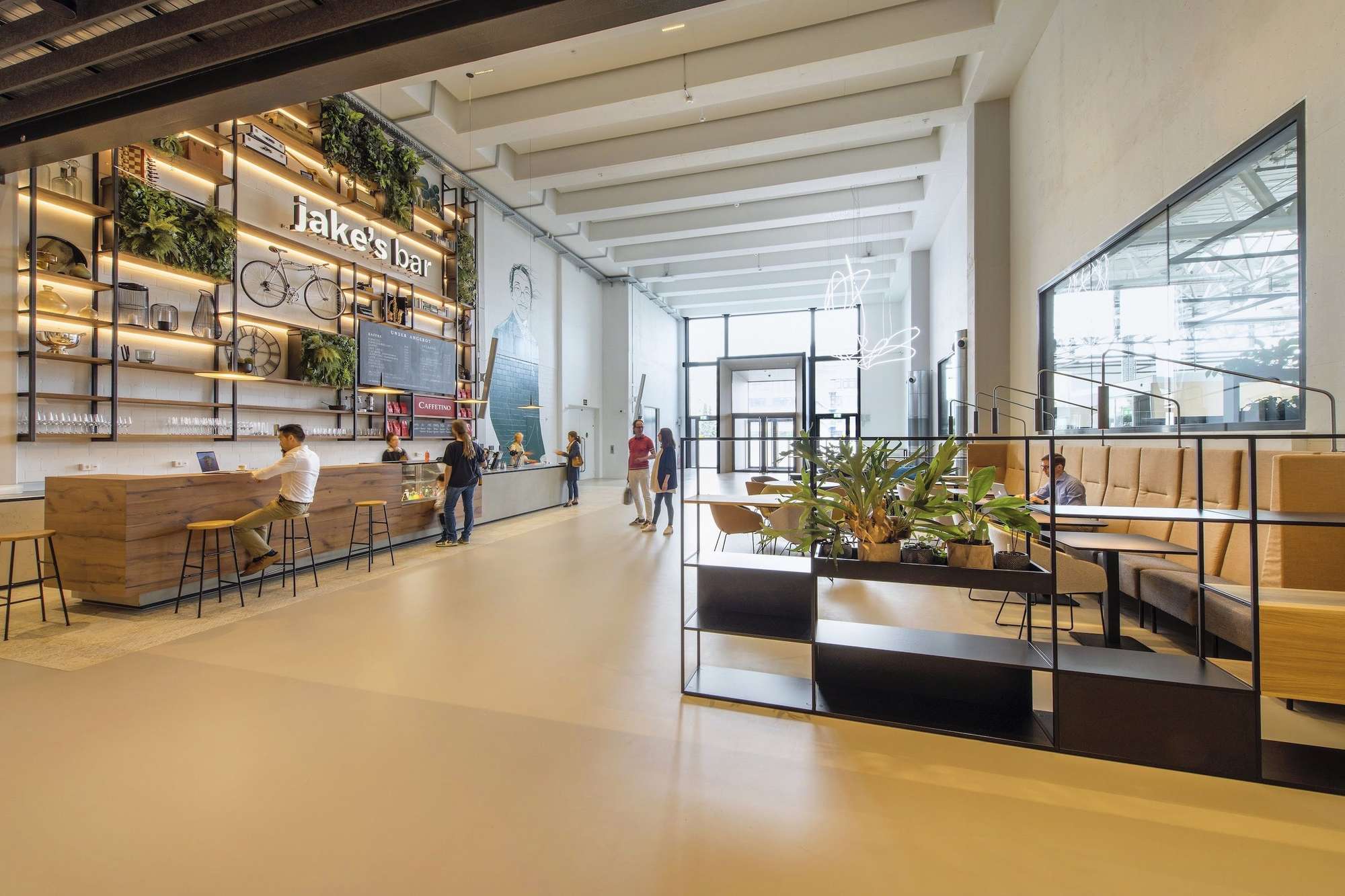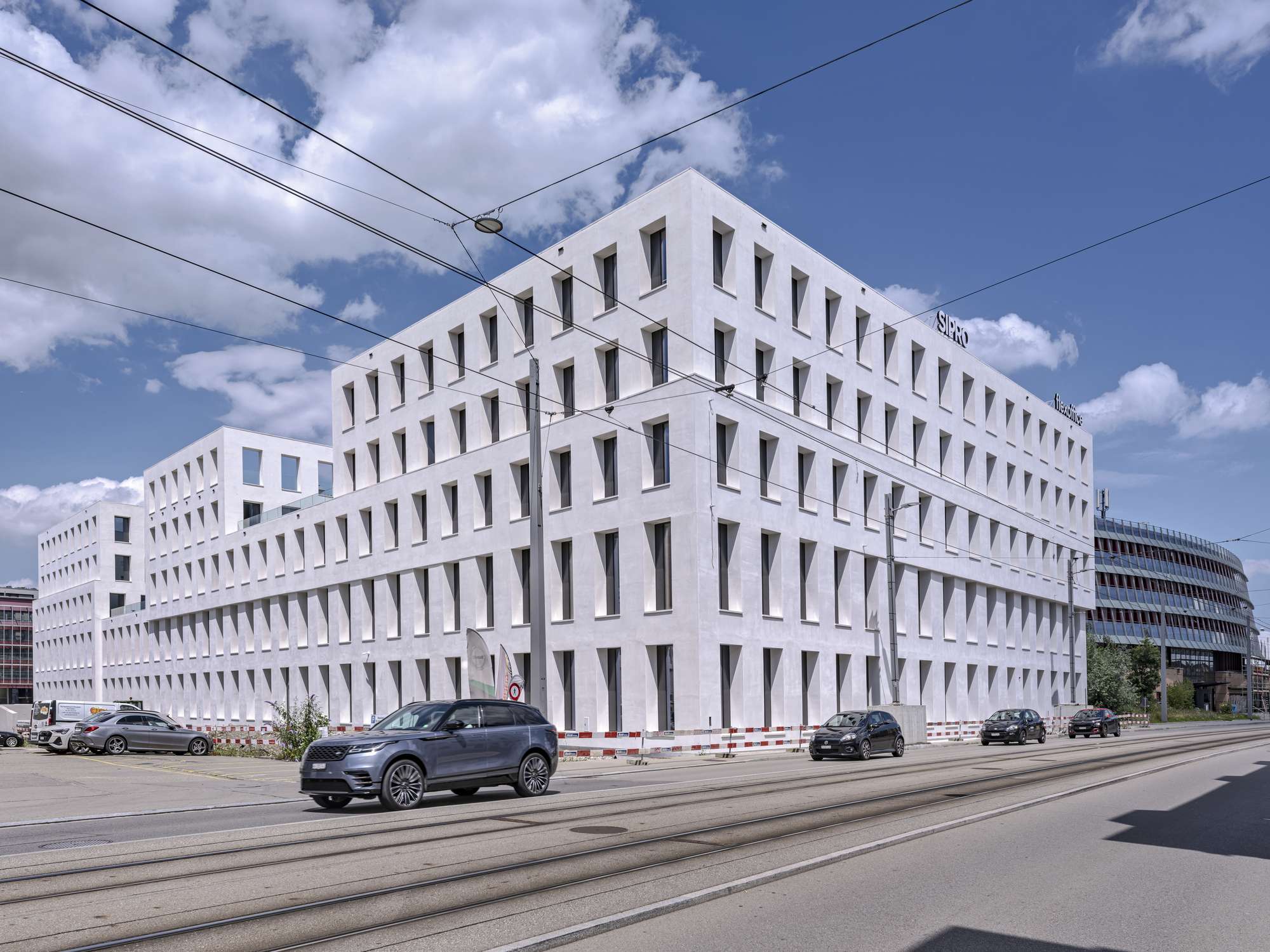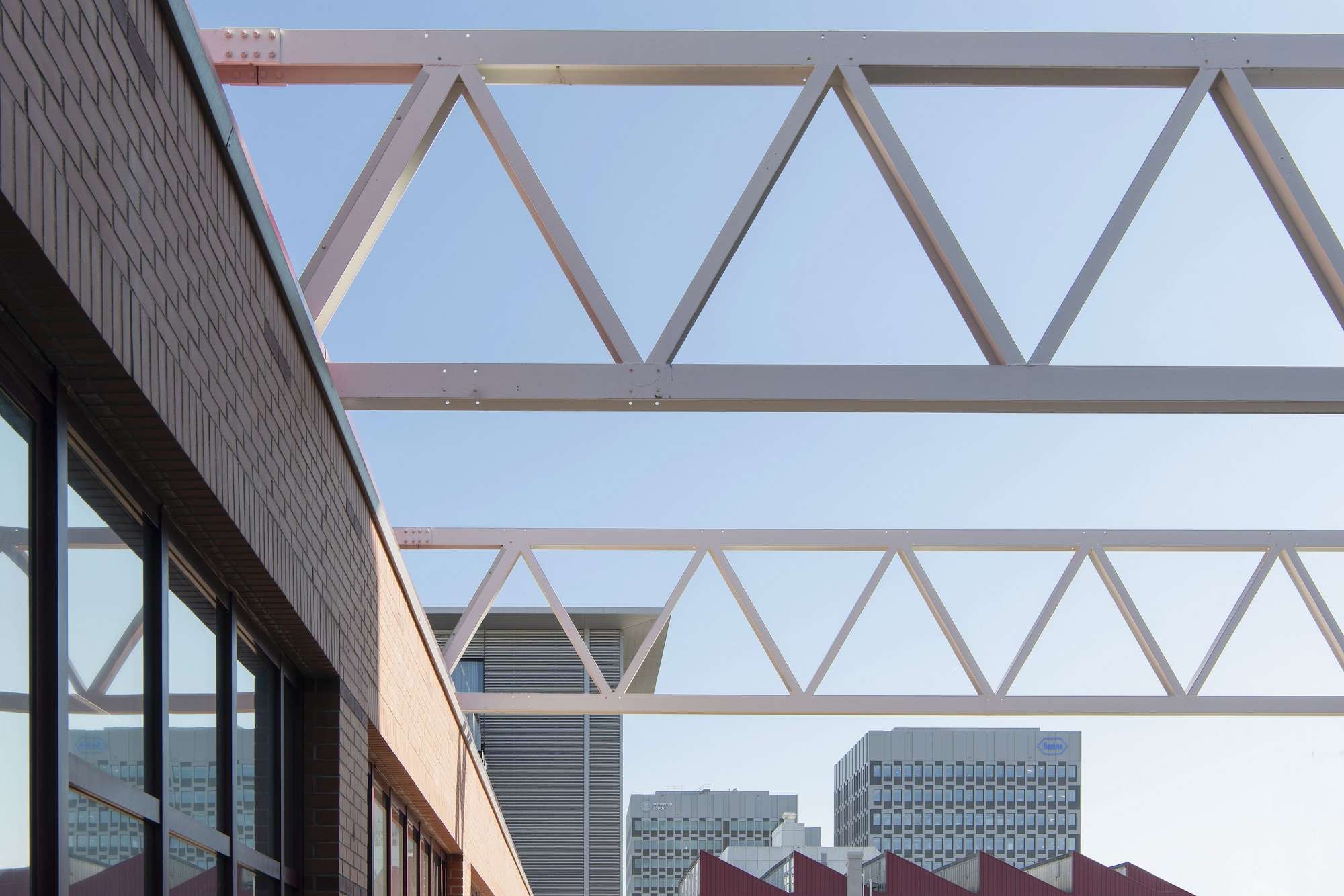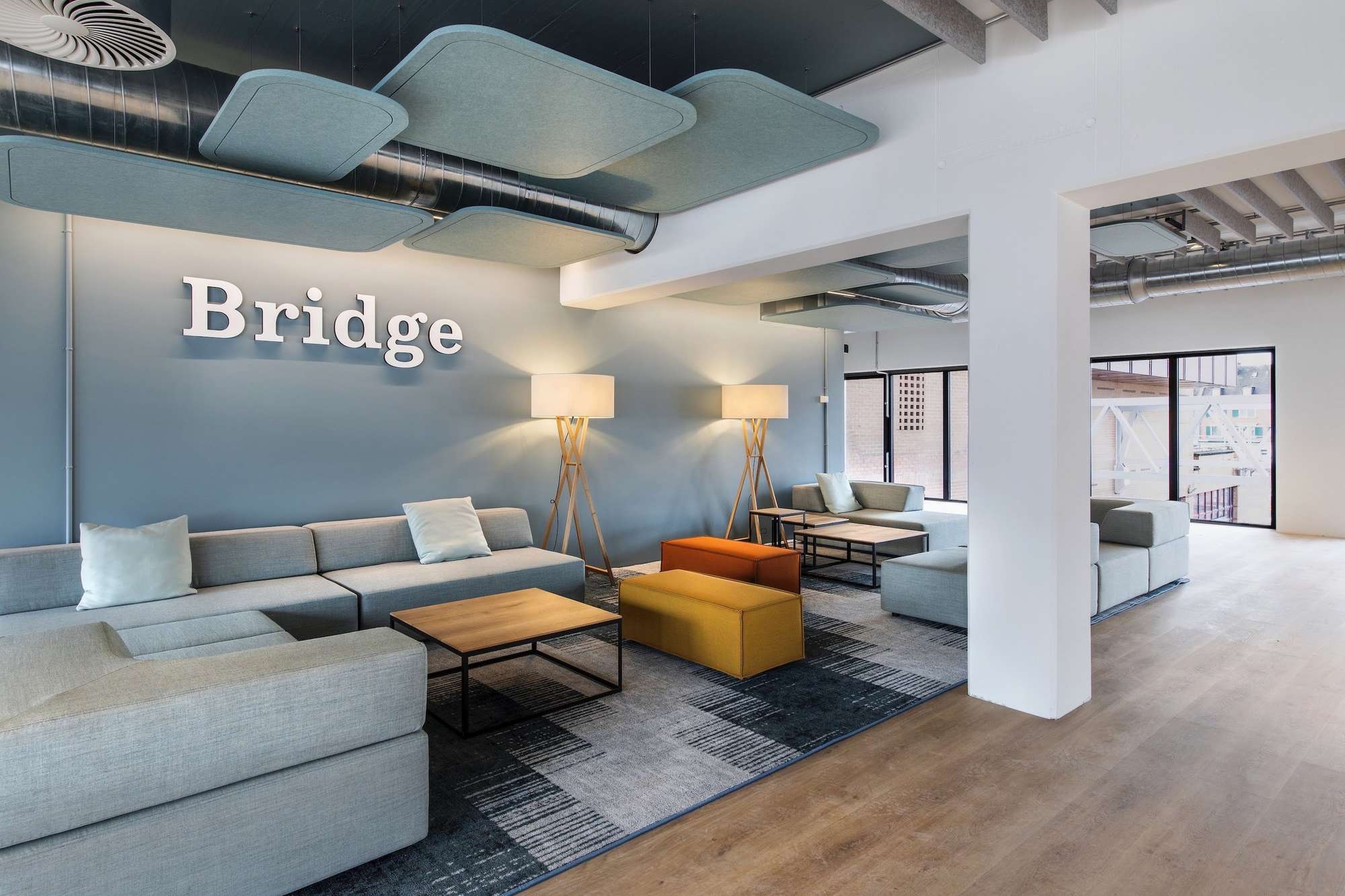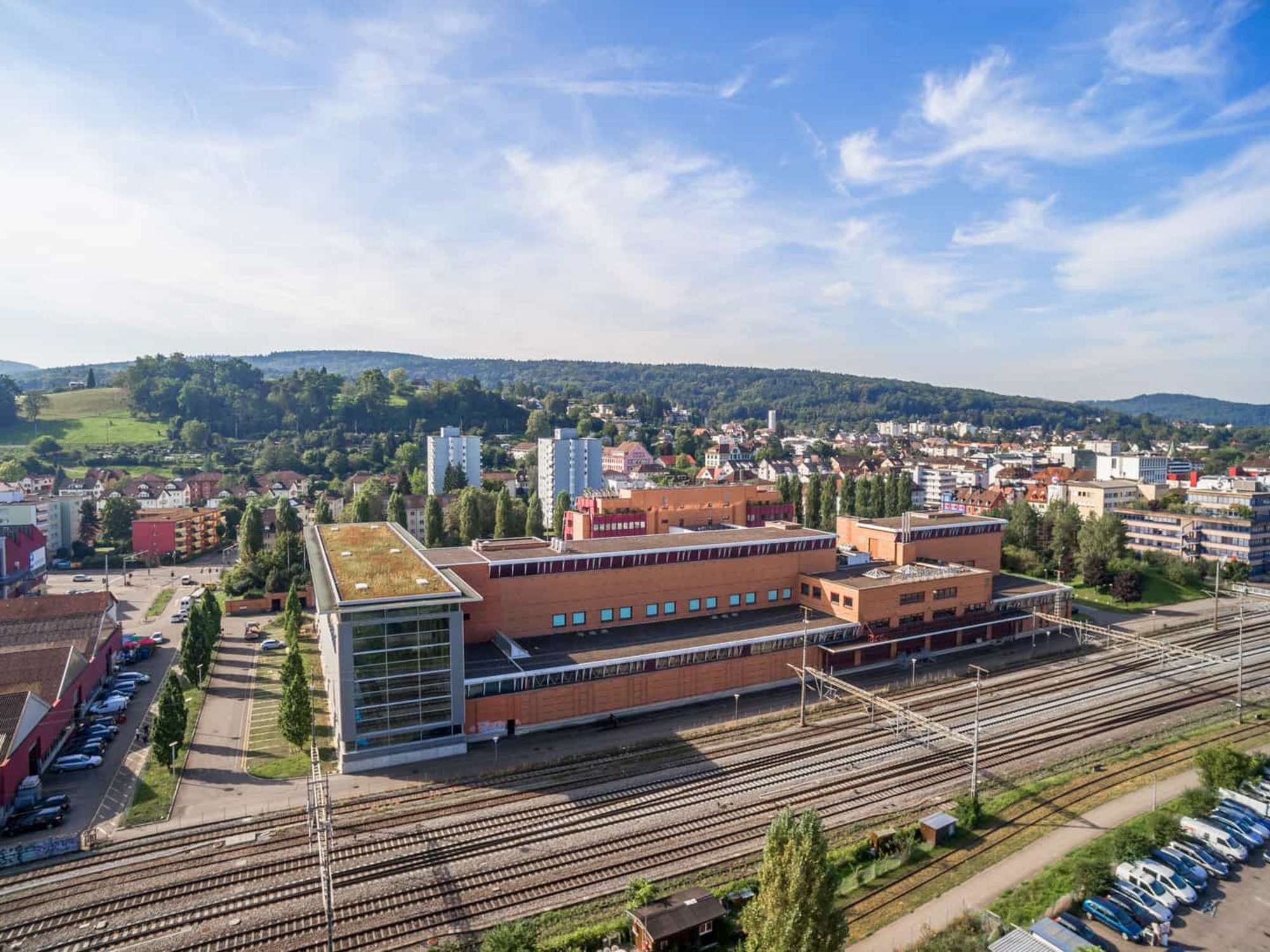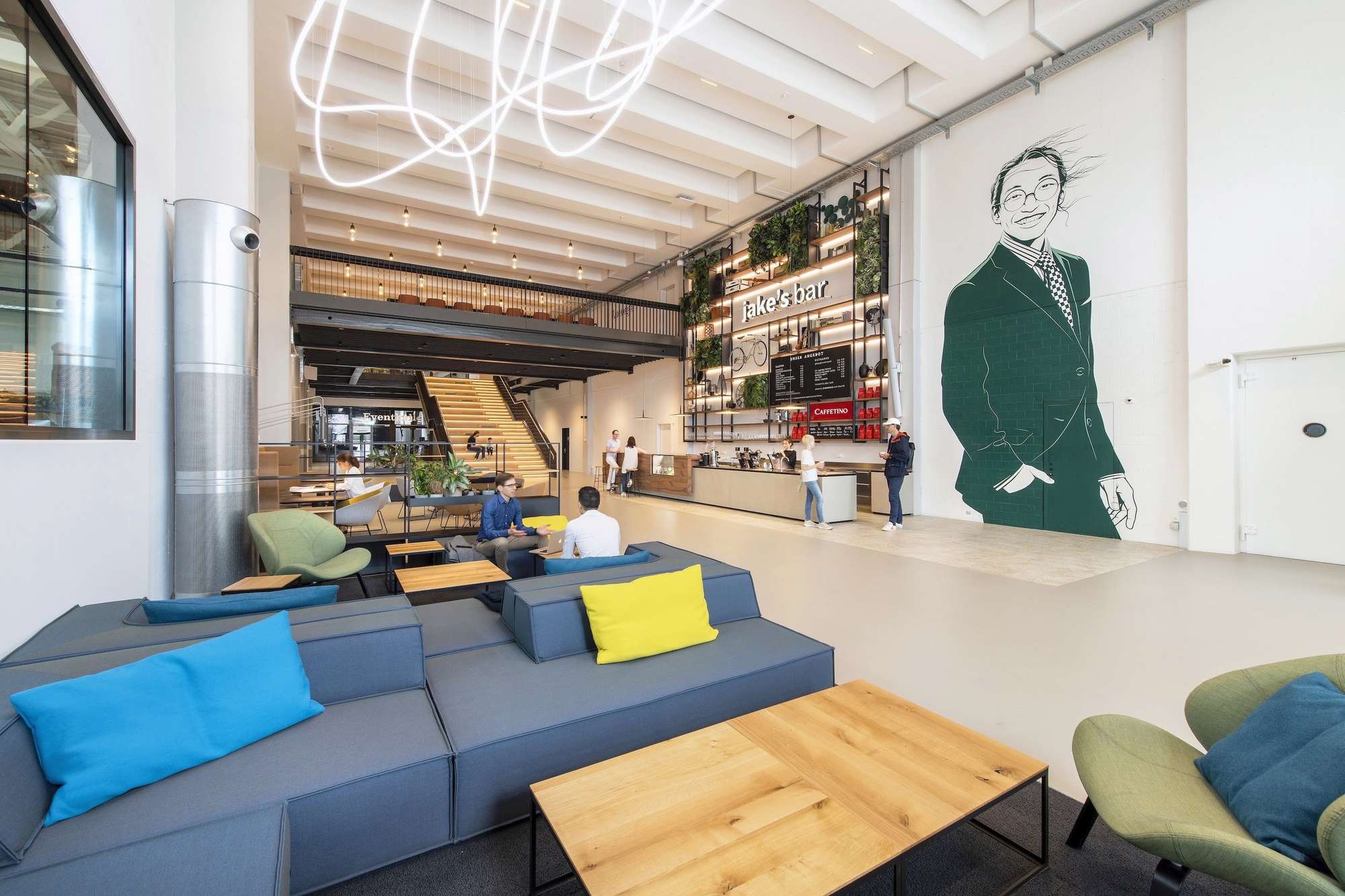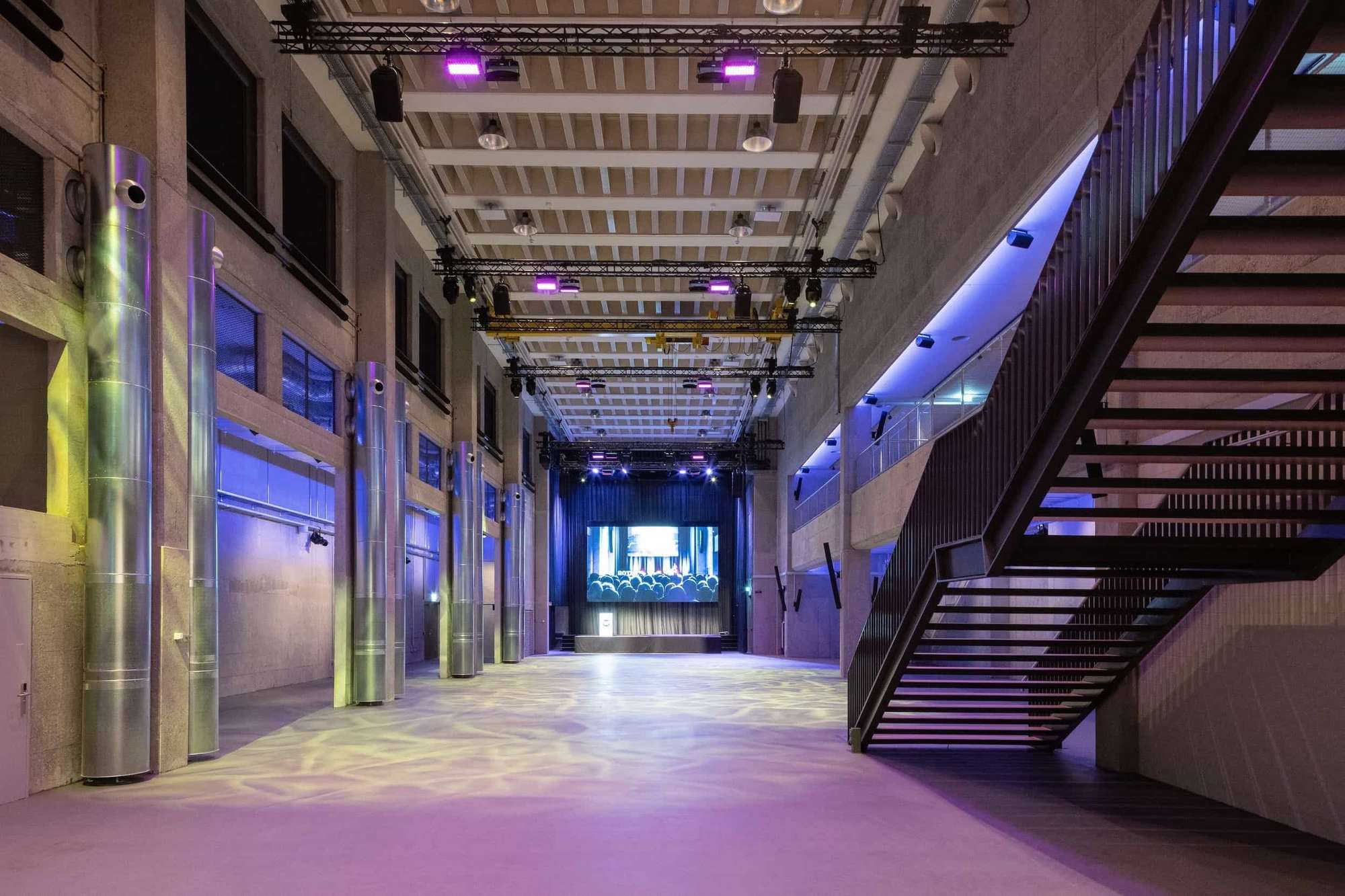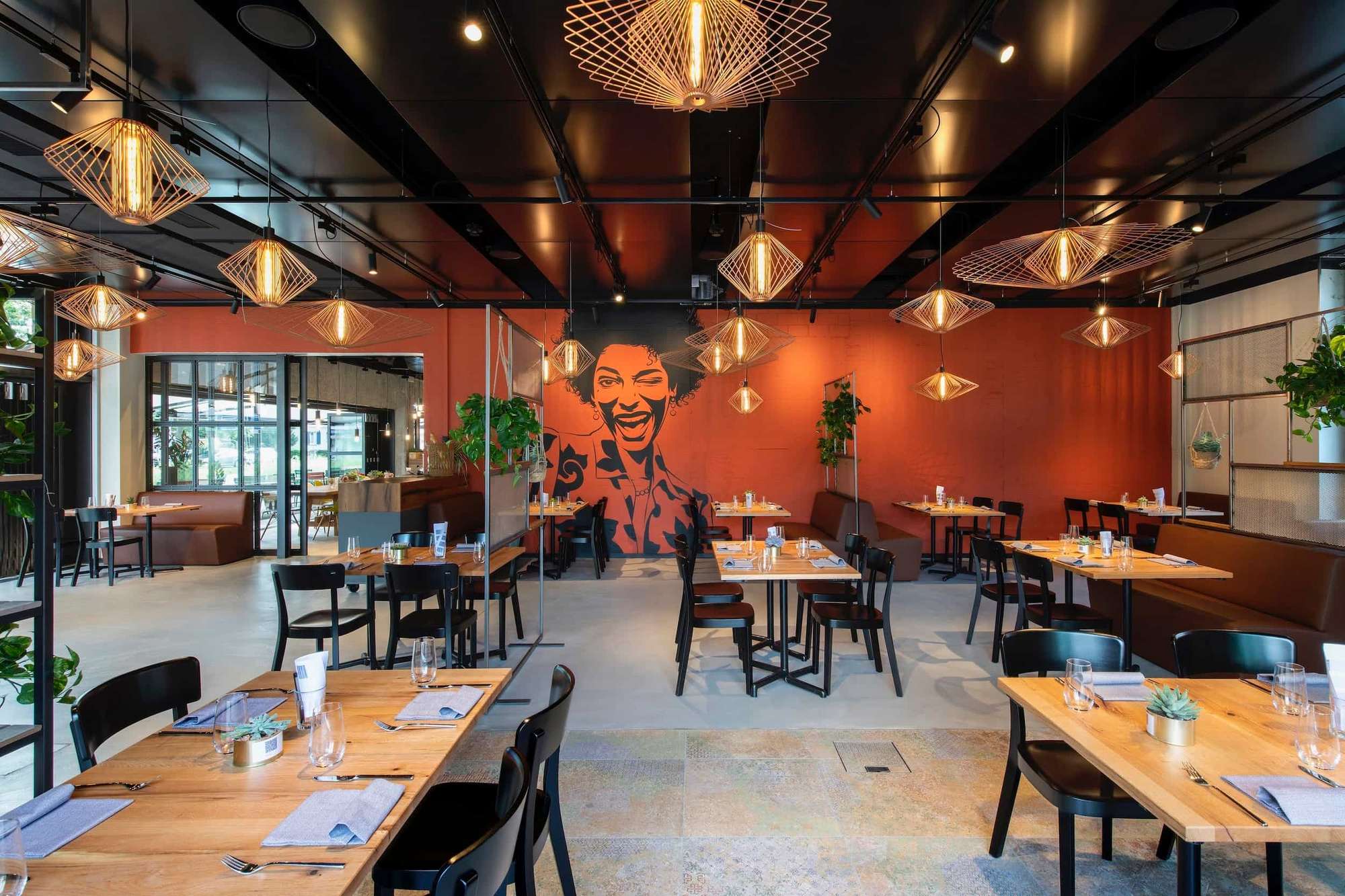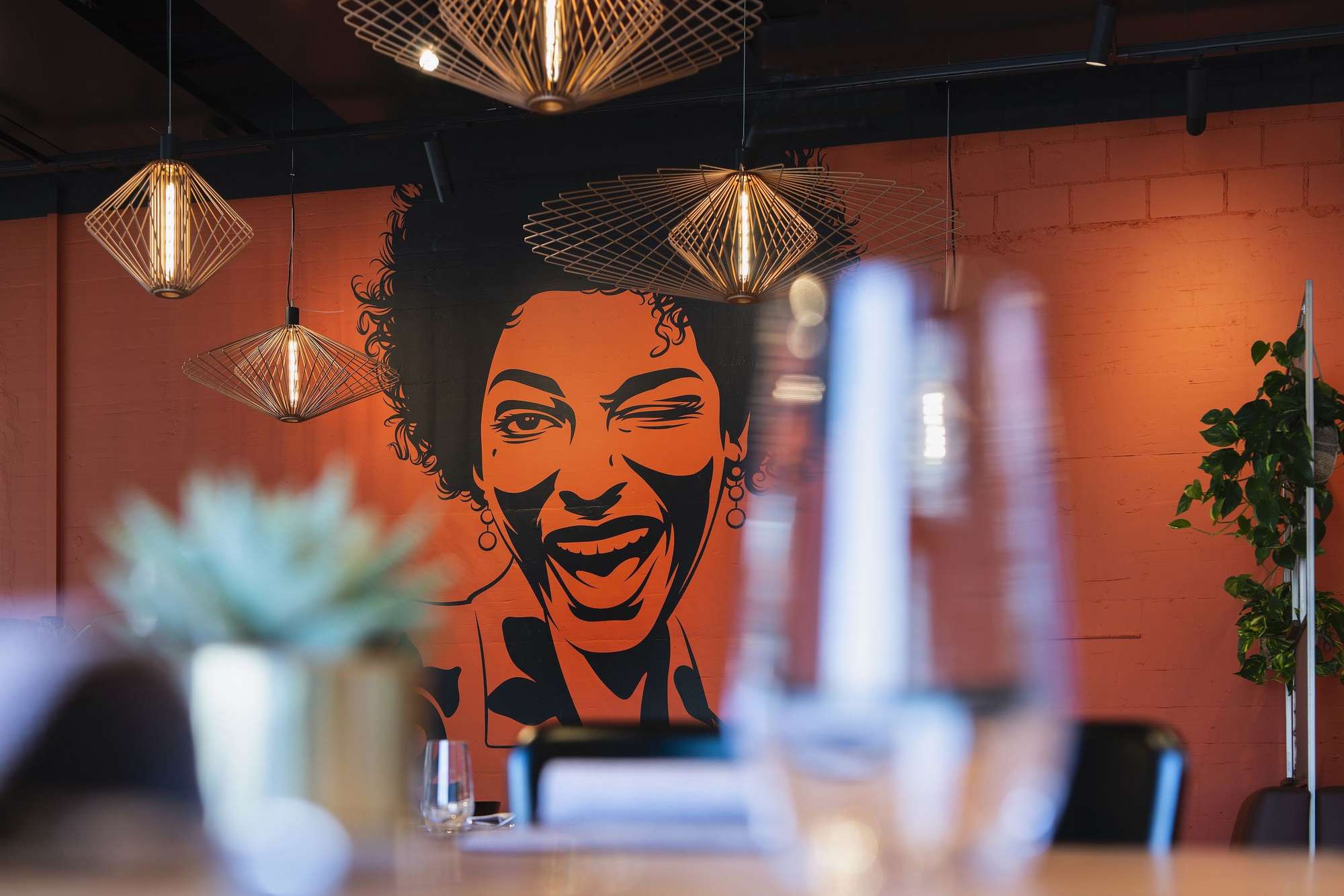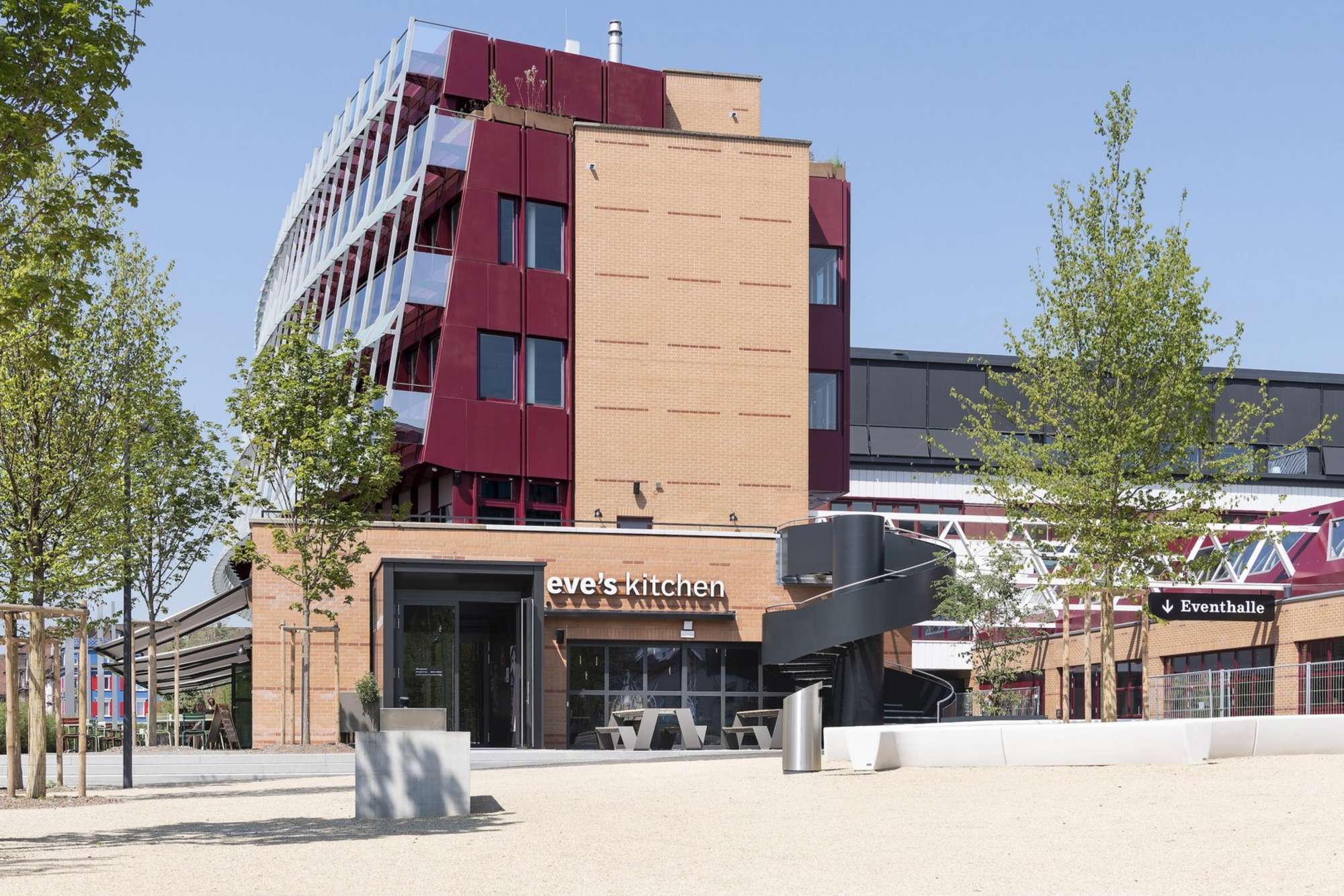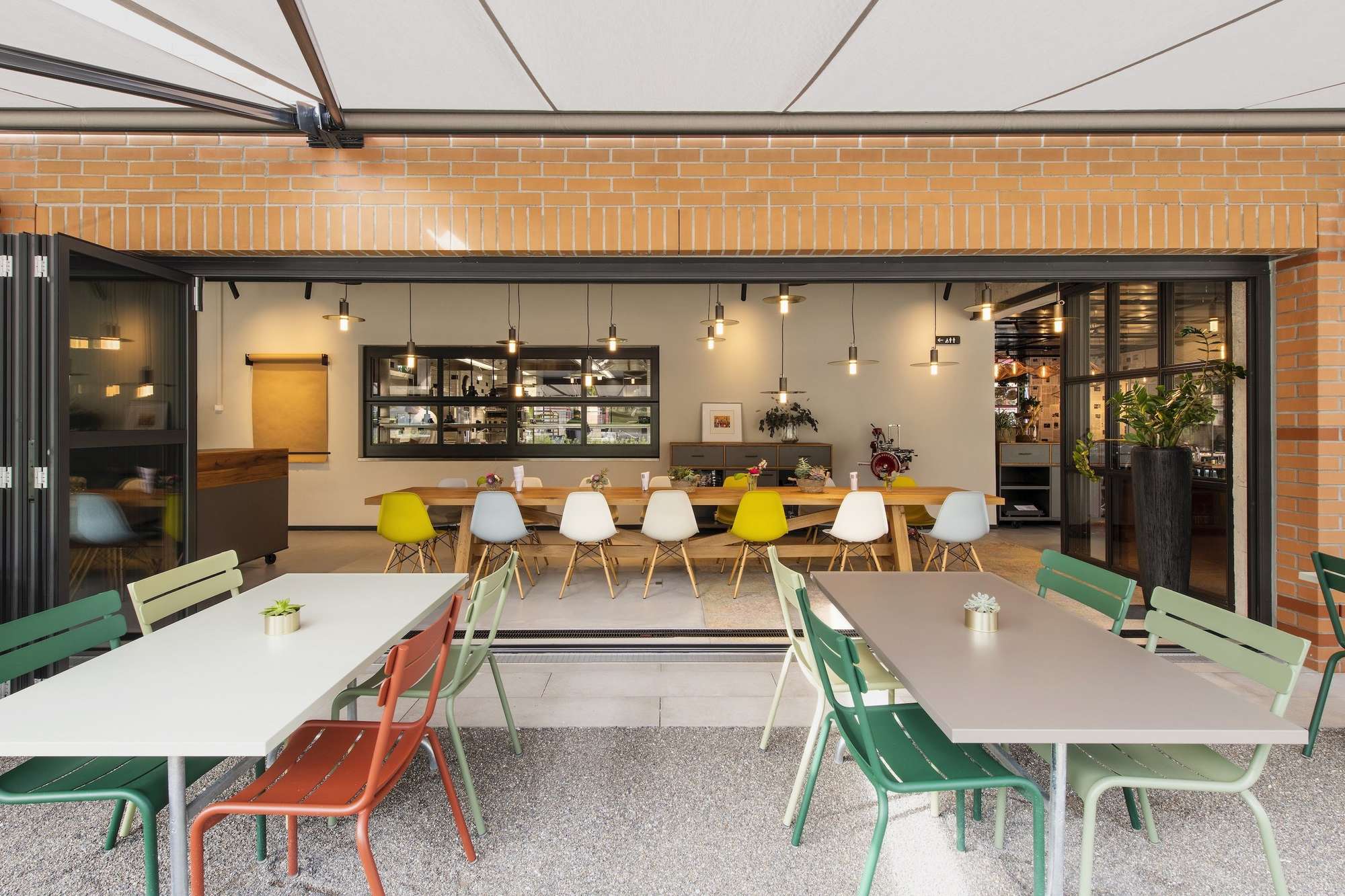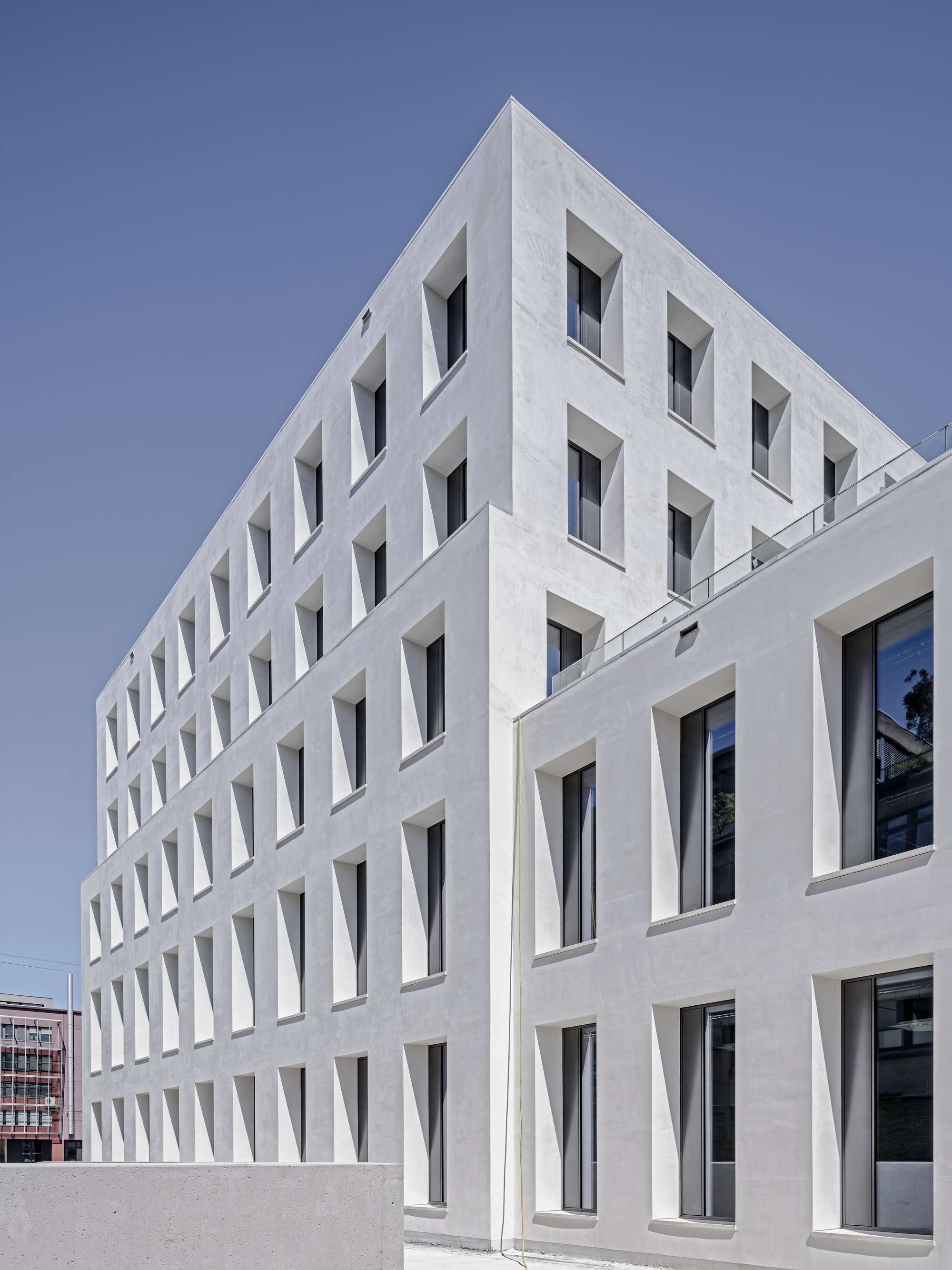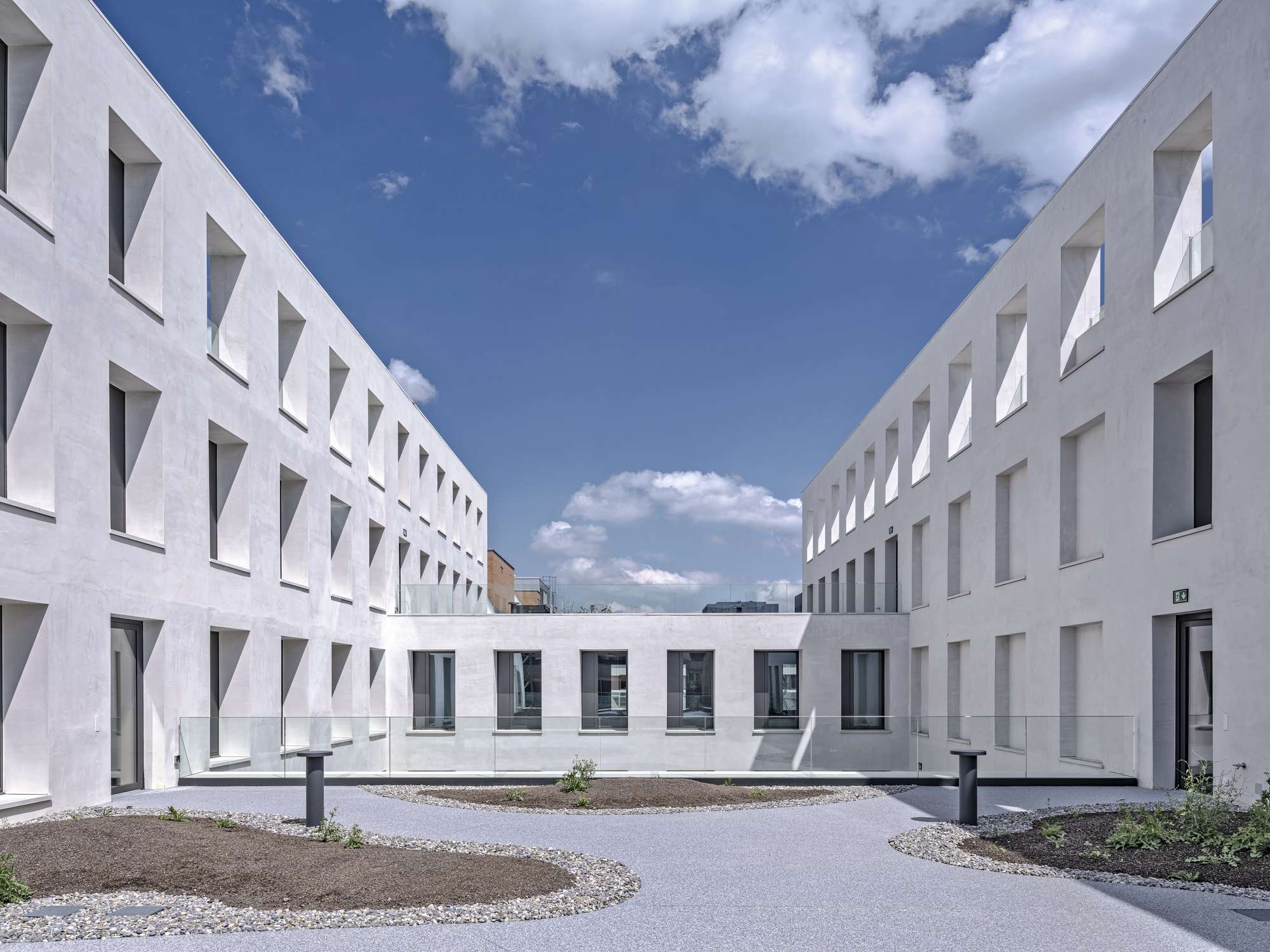JED-Campus
JED stands for knowledge transfer, innovation and entrepreneurship in Schlieren. The campus brings together medium-sized and large companies from various sectors to form a think and work tank for business, industry and commerce and combines unique industrial architecture with modern work and recreation spaces.
Building D - Concept «2226»
This visionary laboratory and office building was developed according to the pioneering Zero Energy Building Concept «2226» and completely dispenses with conventional heating, ventilation and air conditioning systems in the office areas from the 2nd to 4th floors. In winter, heat is generatet by people, running appliances and lamps and stored in the thermal building block. In addition to the recessed windows, the building control system regulates the temperatures inside in summer and ensures an optimum climate via the ventilation flaps. All building materials are also recyclable. Laboratories have been set up on the ground floor and first floor. Conventional building serevices are planned for these rooms. The outstanding building concept «2226», designed by Professor Dietmar Eberle (baumschlager eberle architekten), redefines the standards for environmentally conscious construction. The building has been constructed according to the principles of the circular economy, certified to SNBS Gold and forms the «the sustainable final stone» of the extensive JED-Campus development.
Sustainability
JED has been certified with BREEAM In-use. BREEAM certification (Building Research Establishment Environmental Assessment Method) is a method for assessing sustainability. It is used to certify projects, infrastructures and buildings. Launched in 1990 by the Building Research Establishment (BRE), it sets standards for the environmental characteristics of buildings through the design, specification, construction and operation phases. The installed PV system produces approximately 260 MWh per year. This could, for example, supply 55 4-person households with electricity or cover 16.4 million kilometers with a Segway. Last but not least, over 47,000 liters of heating oil could be saved.
